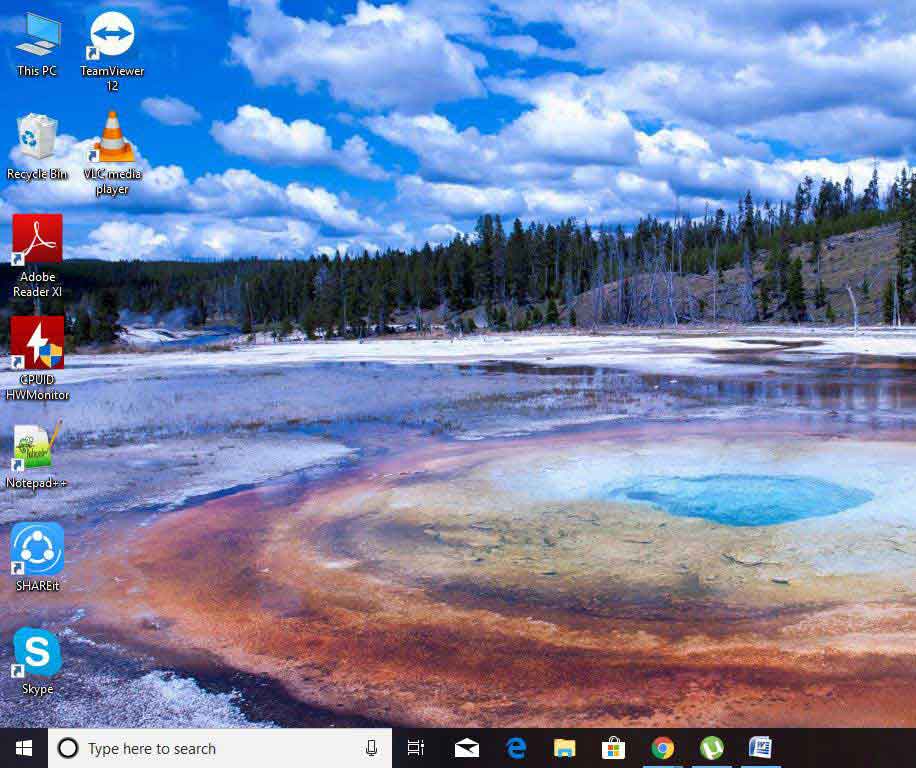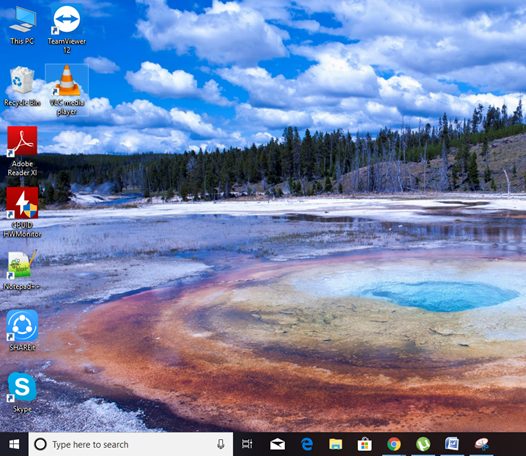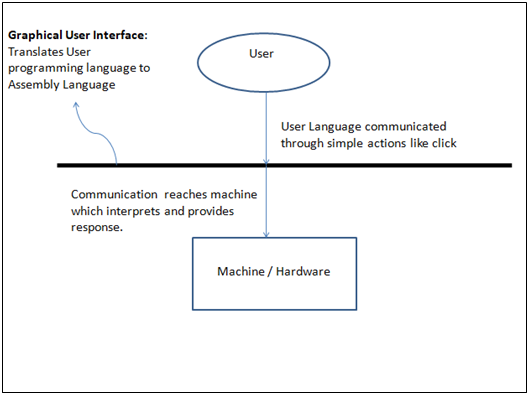Updated June 3, 2023
Introduction to GUI
GUI is a Graphical Interface that visually represents communication presented to the user for easy interaction with the machine. GUI means Graphical User Interface. The common user Interface includes Graphical representations like buttons and icons, and communication can be performed by interacting with these icons rather than the usual text-based or command-based communication.
Understanding
- A common example of a GUI is the Microsoft operating system.
- Consider using MS-DOS and Windows 7.
- Now the most important revelation is the easiness that Windows 7 brings to the table.
- Windows 7 is the go-to option for common users because it is hard for them to communicate with the machine through commands, as in MS-DOS.
- Why is Windows 7 easier to use for a common user? The answer is GUI.
- Yes, GUI helps the user understand the functionalities present within the computer through Graphical icons. A click on the icon initiates the action and the user’s desired communication.
- Thus, it provides functionality by abstracting the hard-to-understand of each component/module’s technical details and provides hassle-free system usage.
How Does GUI Work?
They use a pointer as navigation to interact with different visually appealing Graphical icons. Abstraction is a significant concept used in a GUI operating system. Users can use the pointer to click on the icon, which initiates a series of actions. Usually, an application or functionality will get started. Then the user will have to provide input or tasks to generate the desired action from the machine. The GUI translates user language, comprising simple one-line commands, single and double clicks, to machine language or assembly language. The machine understands machine language, and hence the machine responds to the task initiated, which is translated to use language and communicated to the user via GUI.
Examples
- An Example of a GUI screen is as follows.
- If you want to access or start an application on the above screen, say a video player, you only need to click the VLC Media player icon using the pointer.
- Double-click the icon to open the application.
- This makes the user open a video player like VLC just by clicking a button.
- Now, what if there is no GUI?
- If there is no GUI, we must open a command prompt, add the application command line Interface, and feed instructions to start an application, run the video player, etc.
- This is particularly inconvenient because you must feed in commands for every action.
- But, cut to the chase, and we have GUI. We want to open the VLC Media player. We see the icon. Once we Double click it, the application opens. We can select the file we want and click open. The video starts playing.
- This is how the Graphical user interface made life simpler when using the computer for normal people who are not an expert in working with computers.
- This is the sole reason GUI helped make computers reach the Masses and made working with computers so much fun.
Advantages and Disadvantages
Below are the advantages and disadvantages of a Graphical User Interface:
Advantages
- Simplicity.
- It is visually appealing and makes anyone get involved in working with the machine.
- Even a guy with no computer knowledge can use the computer and perform essential functions. GUI is responsible for that.
- Searching becomes very easy as GUI provides a visual representation of the files present and provides details about them.
- Each and every response from the computer is visually communicated through GUI.
- A user with no computer knowledge can start learning about the machine because of GUI, as it provides scope for users to explore and provides discoverability.
- If, for example, a user starts using a computer with no Interface, then he/she has to provide commands to the machine to execute each task. In a way, the user must have some programming knowledge.
Disadvantages
- One can only do what is already pre-programmed by some other developer.
- You cannot change the basic functionality of a system.
- It takes more power for the system to function.
- Simple command-based interfaces are faster compared to them.
- It consumes more memory space.
- GUI may be simple for a consumer but not as simple for the programmers who have to design and implement each and every function and apply abstraction to feel the advantages.
- If the required functionality is not present, the user must know the necessary commands to proceed with the flow; otherwise, they will remain stuck at that exact point.
How Does the User Interact with GUI?
1. A user interacts with the GUI through simple functions like click, which triggers the GUI to understand what the user wants and promptly translates it to assembly language, as shown in the image below.
2. Besides translating to machine language, it displays the actual process, machine response, memory usage, file size, processor speed, computer power consumption, performed tasks, and many more features.
3. The user uses a single click to select a particular process.
4. Users can double-click to start an application.
5. Users can right-click to know the properties and other details of the application.
6. Users can use the pointer to get information and continue multitasking desired operations.
Why Should We Use GUI?
There are some standards as to how one should use a Graphical User Interface.
- The Visibility and abstraction must be uniform, at least with GUI developed by a single company.
- Every GUI has its features and functions, but the graphic elements and terminology of the system and its architecture must be well maintained.
- A good Graphical User Interface provides a lot of freedom to users, like backtracking to the last step. Undo features must be present for the user.
- And many more.
As said above, there are a lot of standards and GUI delines for a programmer to design and develop a GUI.
- The whole effort they put into developing a GUI helps a user perform a task like playing a video in just a matter of some clicks.
- Simplicity is why we should use it.
Why Do We Need GUI?
1. One could practically start using a computer using GUI.
2. But, one could start to learn and unravel several kinds of options present in the computer.
3. One could also start understanding the computer and its language and get interested in it so much that the person himself could learn or even create a programming language that makes computers and their products even simpler to work with in the future.
How will this Technology Help you in Career Growth?
- Graphical User Interface will help you in your career, irrespective of your job.
- Anyone whose job requires a computer will need a GUI.
- Developing a GUI will always be a bright prospect for developers at every moment of their career.
- One could learn a programming language like Python, Ruby, Java, Dot Net, and many more to develop different types of applications.
Conclusion
Before the start of GUI, there was CLI (Command Line Interface). At that time, no one thought normal people could use a computer. But, now everyone owns a computer and has a basic knowledge of how to use it. That is what Graphical User Interface achieved. It did not ask more from the user. Instead, it provided more for the user to start using the computer. Information Technology boomed with several job offers being presented to the people for designing and developing GUI. Future languages have adapted themselves and are being used to develop the GUI. It will always have eternal scope in the job market and will continue to improve and update itself into a more usable and simpler user interface and change the world as it has already done in the past.
Recommended Articles
This has been a guide to What is GUI? Here we discussed how it works. Needs and advantages use & career with examples of GUI. You can also go through our other suggested articles to learn more –






